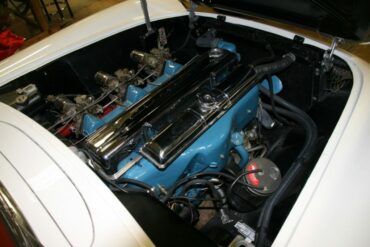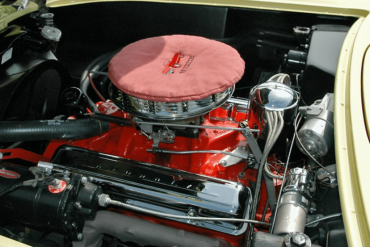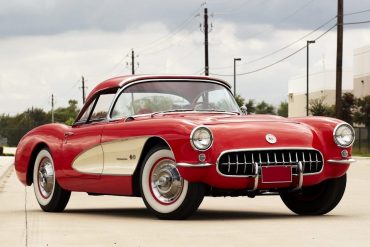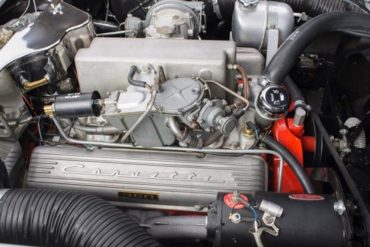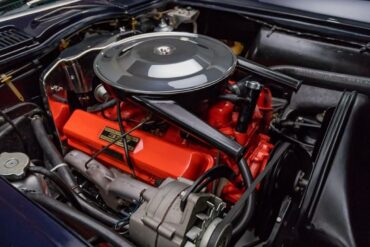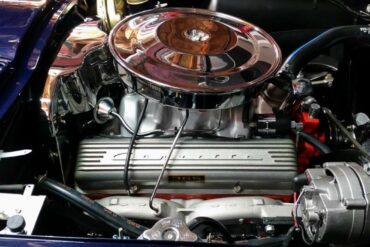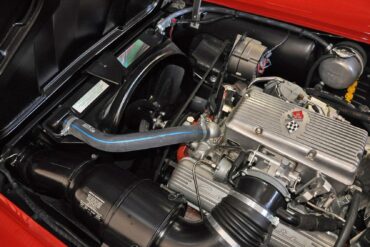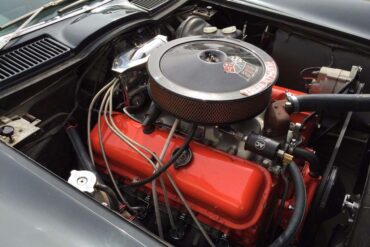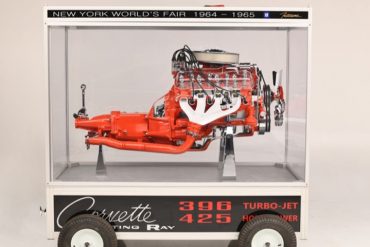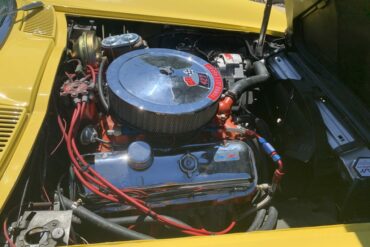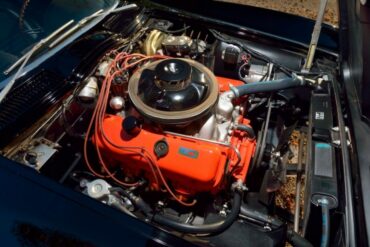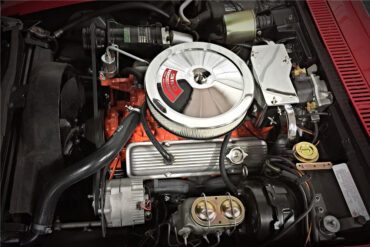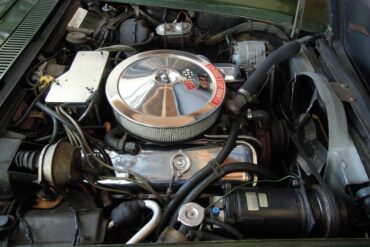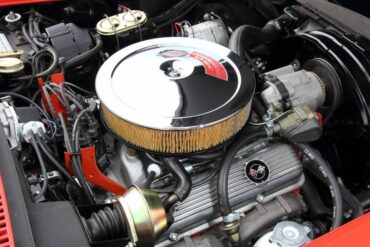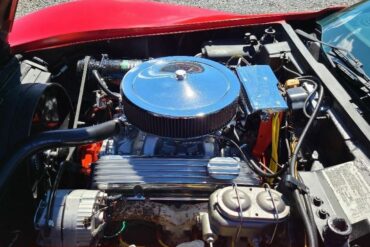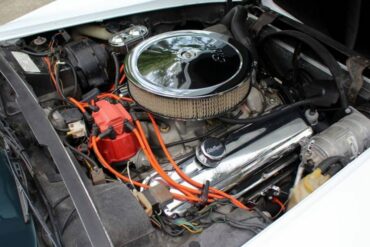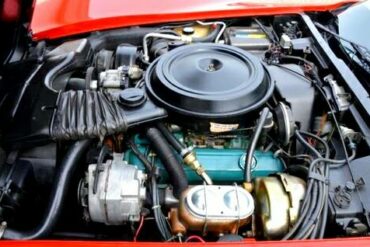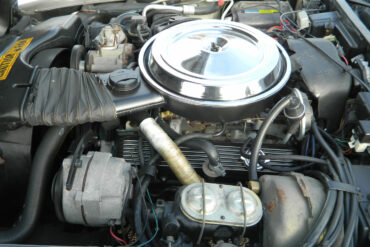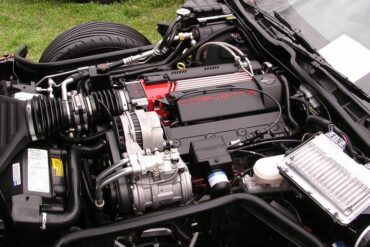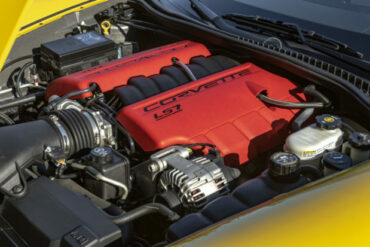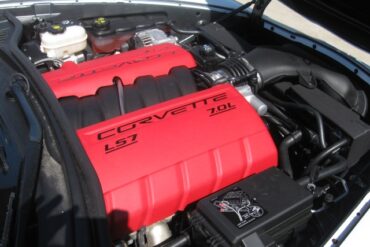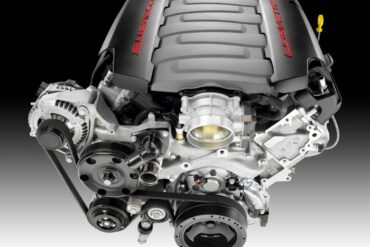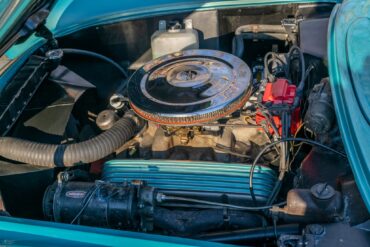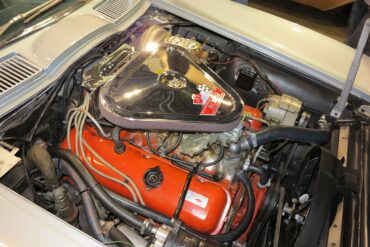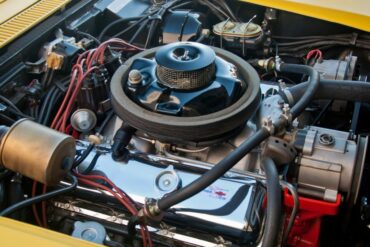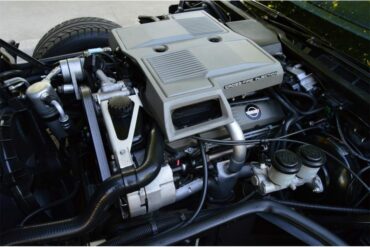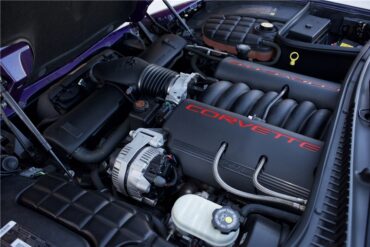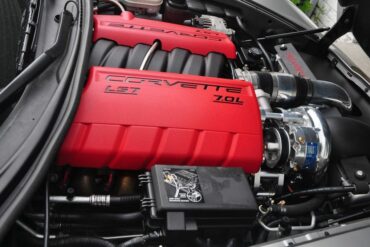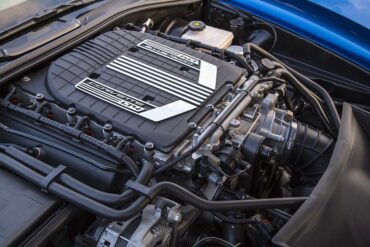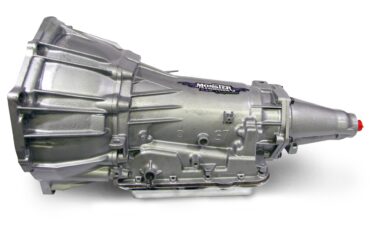Often referred to as the “The Blue-Flame”, the Stovebolt-Six’s performance characteristics were anything but “fiery”. The Corvette, in its earliest form, was often ridiculed for being underpowered. Nonetheless, the Blue-Flame Stovebolt-Six served as the Genesis of Corvette power, if only for a brief period of time.
Following only two years of production, the Corvette's future appeared bleak, as talk began to circulate about discontinuing the line in its entirety. However, the well-timed advent of Chevrolet’s newest powerplant would soon rescue the Corvette from almost certain demise.
Though the 283 cubic-inch V8 seldom receives its share of attention in a world dominated by LS and LT series engines, this early Chevrolet small-block was ahead of its time. The 283ci showcased a plethora of new and innovative tech, and highlighted the engineering prowess of legendary Corvette luminary, Zora-Arkus Duntov.
As efforts turned toward bringing the C2 Corvette to market, GM’s engineering staff envisioned a larger, more robust addition to their already popular Turbo-Fire V8 lineup. This engine would make its debut under the hood of the 1962 Corvette, further bolstering the line’s power and performance-related attributes.
The 327CI small-block V8 was available to consumers in several distinct configurations, all of which produced varying degrees of output. Available in both carbureted and fuel injected forms, the 327CI small-block proved capable of producing anywhere from 250-360 horsepower, depending upon one’s choice of engine code.
The 265 cubic-inch small-block served as the jumping-off point for further engine development. Chevrolet spent the following decade perfecting their earlier small-block, which eventually grew in displacement and became a testbed for early fuel injection technology. Further progress was made in 1964, with the release of the L76 V8. This potent small block proved quite reliable while dishing out more than enough horsepower.
In under a decade, GM’s small-block received a substantial boost in displacement while also becoming the standard-bearer for several new internal developments in engine technology. These developments ultimately produced a new crop of small-block powerplants based on Chevrolet’s new 327 cubic-inch engine platform. Of the four 327 cubic-inch small blocks available in 1964, none topped the output of the fuel-injected L84 V8.
For more than a decade after the Corvette's initial release it had small-block power. In fact, the 265 cubic-inch V8’s 1955 introduction was largely responsible for the Corvette’s validation as a sporty, performance-minded vehicle. However, by the mid-1960s, those behind the scenes at Chevrolet had begun developing a new powerplant. This engine would become the first big-block V8 to be used in Corvette production.
Original 1964-65 World Fair Mark IV Cutaway Engine to Sell At Auction In January, 2019! Ask just about any automotive...
Upon its 1953 release, America’s sports car mustered only 150 HP, yet in 1966, the newly evolved Corvette nearly tripled this level of output. It was in 1966 that the Corvette was offered with not one, but two different variants of the robust 427 cubic-inch (7.0L) V8. In its most potent form (L72), the 427 officially produced 425 HP. However, most believe this value to be grossly understated.
No list of formidable Corvette engines would be complete without including the 1967 L88. The L88 was a fire-breathing variant of GM’s 427 cubic-inch big-block lineup, which served as nothing short of a production race engine. Officially rated at 430 HP, the L88 was capable of propelling its C2 host to previously unattainable performance status. The L88 was nothing, if not a loosely veiled production race engine.
The 350ci V8 was actually a further extension of GM’s decade-old small-block engine series. In a bid to further cement the Corvette’s performance legacy, subsequent modifications to these earlier engines were made, thereby giving birth to one illustrious platform. It would serve as a mainstay of the Corvette line for over three decades to come.
General Motors sought out any means of retaining the Corvette’s performance acuity. This desire ultimately gave rise to the company's illustrious LS5 454 cubic-inch big-block. The 454ci LS5 is remembered as one of the final GM big-block offerings to have come out in the 60’s and 70’s.
The LT-1 served as a revised version of GM’s famed 350 cubic-inch platform, and is often heralded as one of the manufacturer’s most beloved small-block powerplants. Though quite legendary in status, the LT-1 was rather obscure and short-lived during its production run, only produced for three years (1970-1972).
Finally, in 1973, consumers were left with only three available engine options, two of which were of a small-blocks. The third was the 454 cubic-inch LS4, would only survive for two years, serving as the final big-block to grace the Corvette’s engine bay. By 1975, the Corvette was only offered with one of two engines, of which, the 350 cubic-inch L82 was the most formidable.
Was the 454 cubic-inch LS4 one of General Motors’ most powerful big-blocks? Absolutely not. However, it is historically significant nonetheless. The LS4 served as the end of the road for the big-block Corvette, as America’s sports car returned to its small-block roots. Today, many collectors seek out LS4 equipped Corvettes.
GM found itself facing a critical question of sorts. Should the industry giant forgo the sale of Corvettes in California during 1980 or attempt to rectify a troubling situation. In the end, buyers in California would be able to purchase a Corvette, albeit with a variation of the same engine that was offered in Chevrolet’s passenger cars of that era, the 305 cubic-inch V8.
During many production years, consumers were provided with multiple engine options to choose from. This was especially true during the late 1960s. However, by the late 1970s, GM had begun to significantly scale back the number of production engines offered for the Corvette. This trend peaked in 1981, when only one engine, known as the L81, was offered to buyers.
GM ultimately decided to postpone the release of their fifth-gen Corvette, largely due to budgetary constraints. However, the development of a new powerplant for the aging C4 Corvette was greenlighted nonetheless. This engine carried the LT1 designation, and prove quite capable. The 1992 LT1 would serve as a bridge between GM small-block development.
In the midst of the Z06’s development, engineers knew that something truly remarkable would be needed to best the base Corvette’s 400 horsepower LS2. In its production form, this new small-block V8 came to be known as the LS7. The LS7 was nothing short of all-powerful, featuring a displacement of 427 cubic inches and an output of 505 horsepower.
In 2013, a revelation of sorts took place within the Corvette world. General Motors unveiled a “best of both worlds'' type offering, which paired the C6 Corvette, in its convertible form, with an indisputably fearsome powerplant. Beneath the Corvette’s hood, sat a 427 cubic-inch small-block, which carried the LS7 designation.
It seems as if many of the engine-related advancements found in standard General Motors’ vehicles, first came to prominence when implemented in Corvette production, a decade or more prior. One such engine, which could easily be considered revolutionary, is the 2014 6.2-liter LT1. This fearsome powerplant was as sophisticated as it was powerful.
Each Corvette engine is meticulously refined to the point of near-perfection before being greenlit for production. This tradition dates back as far as the Corvette itself—taking root in pre-production efforts of 1952-1953, with the development of the "Blue Flame" inline-six. Amazingly, less than a decade later, consumers could choose to have their Corvette equipped with a 327CI fuel-injected V8.
By the 1960s the Corvette was beginning to hit its stride, especially in terms of performance. While the GM small-block reigned supreme initially, the 1960s would see the rise of the high-displacement big-block, complete with 400-plus horsepower. This was on par with the times, as the horsepower wars of the muscle car era were in full swing. This resulted in several extremely memorable power plants.
The Vette’s performance dropped significantly during the early to mid-1970s, at the hands of newly implemented federal emissions standards, yet it remained relevant. At a point in which many iconic American performance cars fell by the wayside, the Corvette soldiered on. This served as a true testament to many of the memorable Corvette powerplants that were developed during the C3 era.
The C4 Corvette debuted to a frenzy of publicity and would ultimately enjoy a lengthy run, spanning 13 years of production. During this period, GM installed a number of memorable powerplants. Many of these engines proved to be quite innovative in design, even when saddled with newly-mandated emissions equipment of the era. The following is a comprehensive guide to powerplants of the C4 era.
When the C5 Corvette was finally unveiled critics were quick to notice a thundering new powerplant. It carried the LS1 designation, serving as the C5 Corvette’s base engine for the duration of the production run. Ironically, the C5 Corvette would only ever leave the factory with one of two individual engines. This included the aforementioned 5.7L LS1, as well as the all-powerful 5.7L LS6, which powered the C5 Z06.
GM’s was on mission to engineer a Corvette that built upon the line’s performance legacy. By all indications, this is a mission that was fulfilled. The Corvette’s engine bay was host to several outstanding powerplants during the C6’s run. From the base 6.0-liter LS2 to the ZR1’s beastly 6.2-liter LS9, the C6-era was never short on performance. Corvette finally caught up to European brands.
Many consider the Corvette’s seventh generation to be when GM’s iconic car finally came of age. It was during this time that the Corvette made some of its most extensive performance gains on the road and in racing. These performance gains can be attributed to the development in engine technology during the C7’s production run. The Corvette was offered with several available powerplants, all of which were potent.
Throughout the years, GM design and development staff have outfitted the Corvette with a number of highly potent drivetrain combinations....


